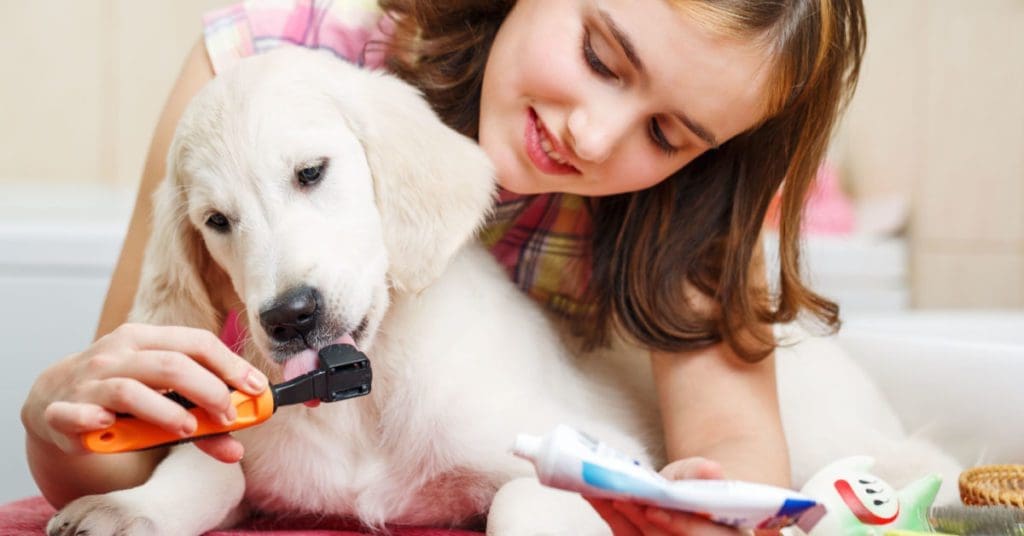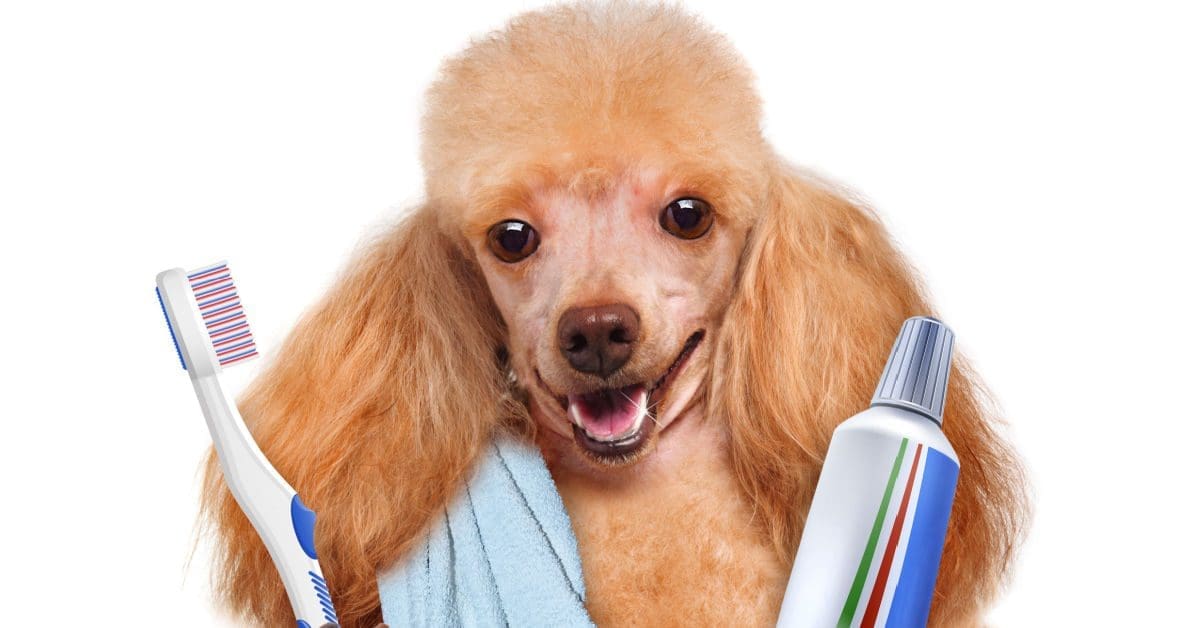How To Brush Your Dog’s Teeth
Brushing your dog’s teeth is integral to their overall health, but it’s not as simple as using an old toothbrush. You must keep a few things in mind to ensure you’re doing it right. Here’s a quick guide on how to brush your dog’s teeth the right way.
It’s no secret that good oral hygiene is vital for humans, but did you know it’s just as crucial for your dog?
Like humans, dogs can develop plaque and tartar on their teeth, leading to gum disease, tooth decay, and other serious health problems. The good news is that brushing your dog’s teeth is an easy and proven way to help keep their mouth healthy and prevent these problems.
What You’ll Need: List of Supplies
When it comes to dog dental care, tooth brushing is one of the most important things you can do for your dog. But to brush your dog’s teeth properly, you need the right supplies.
Here are the must-have items you need to keep your dog’s teeth clean and healthy.
Toothbrush
Just like humans, dogs need a toothbrush designed specifically for their mouths. Look for a toothbrush with soft bristles that will be gentle on your dog’s gums.
– A toothbrush designed for human babies will do the trick.
– A finger toothbrush (designed for cats and dogs) is also a good option.
Toothpaste
You can’t use human toothpaste on your dog – they need special canine toothpaste that’s safe to swallow. Most dog toothpaste is flavored with chicken or beef to make them more appealing.
– A tablespoon of baking soda mixed with a teaspoon of beef or chicken broth will work fine.
Dental Chew
While this doesn’t require any effort on your part, a dental chew is an excellent addition to a regular tooth brushing regime, as it helps remove plaque and tartar from your dog’s enamel.
– It is essential to choose a dental chew that is the right size for your dog and safe for them to consume.
These essential dental supplies can help remove plaque and tartar from your dog’s teeth, as well as help keep your dog’s breath fresh. However, always consult with your veterinarian before starting any new dental care routine, as they can help ensure that you are using the safest and most effective dental care products for your dog.
The Process: Step-By-Step Guide

You know that brushing your dog’s teeth is good for him or her, but she or he doesn’t.
The fact is that brushing your dog’s teeth can make them nervous as they may not understand what is happening – it’s pretty uncomfortable when you force their mouth open and stick a strange object they have never experienced before inside of it.
– If they are disturbed and end up fighting against the procedure, you will not be able to brush away all the bacteria that cause tooth and gum decay and bad breath.
No need to fear, though (for you and your dog), because the following steps will ensure that your dog stays calm during the process and that you get the job done right even if you have never done it before.
Tooth Brushing Steps:
Step 1
Choose a quiet spot to brush your dog’s teeth! Not only will this help ensure that your dog stays calm during their dental appointment, but it also allows you to focus on cleaning all of their teeth.
Step 2
Call your dog in a friendly voice before you brush their teeth. Dogs respond well to gentle voices and are usually willing to cooperate regarding a dental cleaning. By calling them before brushing, you can avoid unwanted tension and ensure they enjoy their dental experience.
Step 3
Rub your dog’s teeth in a back-and-forth motion with a finger or soft cloth.
Step 4
Once your dog has settled into your hand motion, introduce some pet toothpaste into their mouth with your finger. Some popular dog toothpaste brands include Pedigree Dentastix and Greenies Toothpaste for Dogs.
Step 5
When you see that your dog enjoys the taste of the toothpaste you have chosen, you can then add the toothpaste to their doggy toothbrush.
Step 6
Raise your dog’s lip, brush against the gum line, and gently push it forward and up towards the canine tooth. Brush around the canine teeth, then brush across each jawbone to get under each ear.
Step 7
Repeat on the other side – brush for 30 seconds on each side, if possible.
Following the above process will make the teeth cleaning procedure much smoother and more straightforward. Plus, it will help keep your dog calm, and your efforts focused so that all the benefits that come from regular teeth cleanings are achieved.
Tips and Tricks: Helpful Hints
While the above steps will give you a solid foundation from which to design your dog’s dental hygiene regime, the overall procedure can be made even easier by adhering to the following tips.
Tip 1
Gently Massage the forehead, temples, and nose while you’re saying “Down” or “Stay.” This will help relax your dog and make them less resistant to being brushed.
Tip 2
Use a soft-bristled brush. Stiff bristles can damage teeth and gums. If your dog resists being brushed, use a small amount of gentle soap on the brush’s bristles first.
Tip 3
Brush from back to front using circular motions, using short, consistent strokes at a time. Never push too hard on the tooth or gum – you might accidentally cause injury.
Tip 4
Offer a treat to your dog after brushing. This will create a positive image in their mind of the overall experience, which will make the next session even easier to perform.
Tip 5
As a dog’s mouth is full of bacteria, it is a good idea to wash your dog’s toothbrush thoroughly after use – the point is to remove bacteria during brushing, not put it back in.
Tip 6
Brush your dog’s teeth at least three times per week – you can do so twice daily if you have the time.
Following these simple tips can help your pooch enjoy their brushing routine to the point where they actually look forward to their next session.
Conclusion: Summarizing the Benefits
Brushing your dog’s teeth is beneficial for both you and your pet. It removes plaque and bacteria from their teeth, which can help keep their mouths and gums healthy. Additionally, it may also promote a clean smell and provide some relief from dental pain. So don’t wait any longer – use the steps and tips above and brush your dog’s teeth today!
And while you are at it, how about setting up a dental appointment for yourself and your family? Suburban Essex Dental is here for you to do just that. Contact us here to schedule your next dental appointment.







